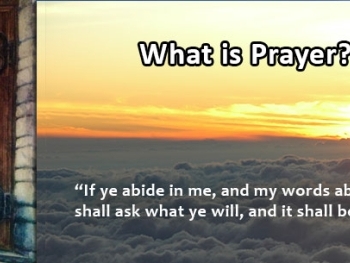The Common English Bible (CEB), first published in 2011, represents a significant effort to make the Bible accessible and readable for contemporary audiences. With a focus on clarity and inclusivity, the CEB seeks to address the needs of modern readers while respecting the original texts. This post explores the specific aspects of the CEB, including its translation methodology, its use in churches, and its comparison to other Bible translations.
Translation Methodology
1. Translation Philosophy: Dynamic Equivalence
- Objective: The CEB employs a dynamic equivalence approach, aiming to convey the meaning of the original texts in a way that resonates with contemporary readers. This methodology emphasizes readability and clarity over strict literalism.
- Example - John 3:16:
- CEB: “God loved the world in this way: He gave his only Son so that everyone who believes in him will not perish but have eternal life.”
- Analysis: This translation prioritizes simplicity and clarity, making the verse accessible to modern readers without complex theological jargon.
2. Inclusive Language
- Objective: The CEB strives for inclusive language, aiming to be gender-sensitive and welcoming to all readers. This includes using terms that reflect a broad understanding of humanity and avoid exclusive language.
- Example - Genesis 1:27:
- CEB: “So God created humanity in his own image, in the image of God he created them; male and female he created them.”
- Analysis: The term “humanity” replaces “man,” reflecting a more inclusive approach to gender language while maintaining the original meaning.
3. Collaborative Translation Process
- Objective: The CEB was produced by a diverse group of translators and scholars, including both biblical experts and laypeople. This collaborative approach aimed to incorporate various perspectives and ensure the translation’s accessibility.
- Example - Matthew 5:3:
- CEB: “Happy are people who are hopeless, because the kingdom of heaven is theirs.”
- Analysis: The collaborative effort sought to make the Beatitudes more understandable and relevant to contemporary readers by focusing on the practical implications of Jesus’ teachings.
4. Textual Basis
- Objective: The CEB relies on critical editions of the Hebrew, Aramaic, and Greek texts, aiming for accuracy while also considering readability.
- Example - Psalm 23💯
- CEB: “The Lord is my shepherd. I lack nothing.”
- Analysis: This translation uses straightforward language that reflects both the original text’s meaning and the need for clarity in contemporary English.
Use in Churches
1. Worship and Preaching
- Objective: The CEB is designed to be used in worship settings, including sermons, Bible studies, and personal devotions. Its readability makes it suitable for congregational reading and teaching.
- Example - Philippians 4:13:
- CEB: “I can do all things through him who strengthens me.”
- Analysis: The translation’s clarity and simplicity make it a practical choice for preaching and teaching, helping congregants understand and apply biblical principles.
2. Bible Studies and Small Groups
- Objective: The CEB’s approachable language is well-suited for Bible study groups and educational settings, where participants seek to engage with the text in a meaningful way.
- Example - Galatians 5:22-23:
- CEB: “But the fruit of the Spirit is love, joy, peace, patience, kindness, goodness, faithfulness, gentleness, and self-control. There is no law against things like this.”
- Analysis: The straightforward presentation of the fruit of the Spirit facilitates discussion and application in group settings.
3. Personal Devotion
- Objective: For personal reading and meditation, the CEB’s accessible language helps readers engage with the Bible in a way that is both meaningful and understandable.
- Example - Romans 8:28:
- CEB: “We know that all things work together for good for those who love God, who are called according to his purpose.”
- Analysis: The clear and encouraging language supports personal reflection and spiritual growth.
4. Inclusivity in Church Settings
- Objective: The CEB’s inclusive language and emphasis on accessibility have made it a popular choice among churches seeking to be welcoming to diverse congregations.
- Example - Colossians 3:11:
- CEB: “There is neither Jew nor Greek, neither slave nor free, neither male nor female. For you are all one in Christ Jesus.”
- Analysis: This translation reflects the CEB’s commitment to inclusivity and equality, aligning with many churches’ values of diversity and unity.
Comparison to Other Translations
1. CEB vs. NIV (New International Version)
- Objective: The NIV, like the CEB, uses dynamic equivalence but with slightly different priorities in translation philosophy and language use.
- Example - John 3:16:
- NIV: “For God so loved the world that he gave his one and only Son, that whoever believes in him shall not perish but have eternal life.”
- Comparison: Both translations aim for readability and clarity, but the NIV’s use of “one and only Son” reflects a more traditional phrasing compared to the CEB’s “only Son.”
2. CEB vs. ESV (English Standard Version)
- Objective: The ESV is known for its more formal equivalence approach, which maintains closer adherence to the original language structure.
- Example - Romans 8:28:
- ESV: “And we know that for those who love God all things work together for good, for those who are called according to his purpose.”
- Comparison: The ESV’s language is more formal and closely aligned with traditional English translations, whereas the CEB’s language is more contemporary and accessible.
3. CEB vs. KJV (King James Version)
- Objective: The KJV is a classic translation known for its majestic and formal language, contrasting with the CEB’s modern readability.
- Example - Psalm 23💯
- KJV: “The Lord is my shepherd; I shall not want.”
- Comparison: The KJV’s language is more archaic, which may be challenging for modern readers compared to the CEB’s straightforward and accessible phrasing.
4. CEB vs. NLT (New Living Translation)
- Objective: The NLT, like the CEB, emphasizes readability and dynamic equivalence, aiming to present the Bible in a contemporary and understandable manner.
- Example - Galatians 5:22-23:
- NLT: “But the Holy Spirit produces this kind of fruit in our lives: love, joy, peace, patience, kindness, goodness, faithfulness, gentleness, and self-control. There is no law against these things!”
- Comparison: Both translations aim to make the text accessible and relatable, though the CEB and NLT may differ in specific word choices and phrasing.
5. CEB vs. HCSB (Holman Christian Standard Bible)
- Objective: The HCSB also employs dynamic equivalence but with a focus on ensuring faithfulness to the original texts and Southern Baptist theological perspectives.
- Example - Philippians 4:13:
- HCSB: “I am able to do all things through Him who strengthens me.”
- Comparison: The HCSB and CEB both emphasize readability, but the HCSB may include more traditional phrasing and theological nuances compared to the CEB’s more contemporary approach.
The Common English Bible (CEB) is notable for its modern translation methodology, which seeks to balance clarity, inclusivity, and readability. Its use in churches and Bible studies reflects its commitment to accessibility and relevance for contemporary readers. By comparing the CEB to other translations such as the NIV, ESV, KJV, NLT, and HCSB, it becomes clear that the CEB occupies a unique position within the spectrum of English Bible translations. Its emphasis on dynamic equivalence and inclusive language makes it a valuable resource for diverse audiences seeking an accessible and meaningful engagement with the scriptures.
Bible translation comparison Modern Bible translations Bible translation comparisons Dynamic equivalence translation Early modern Bible translations Literal vs dynamic equivalence translations Dynamic equivalence translations Common English Bible (CEB) CEB translation methodology CEB vs. NIV CEB vs. ESV CEB in churches CEB readability CEB inclusivity








